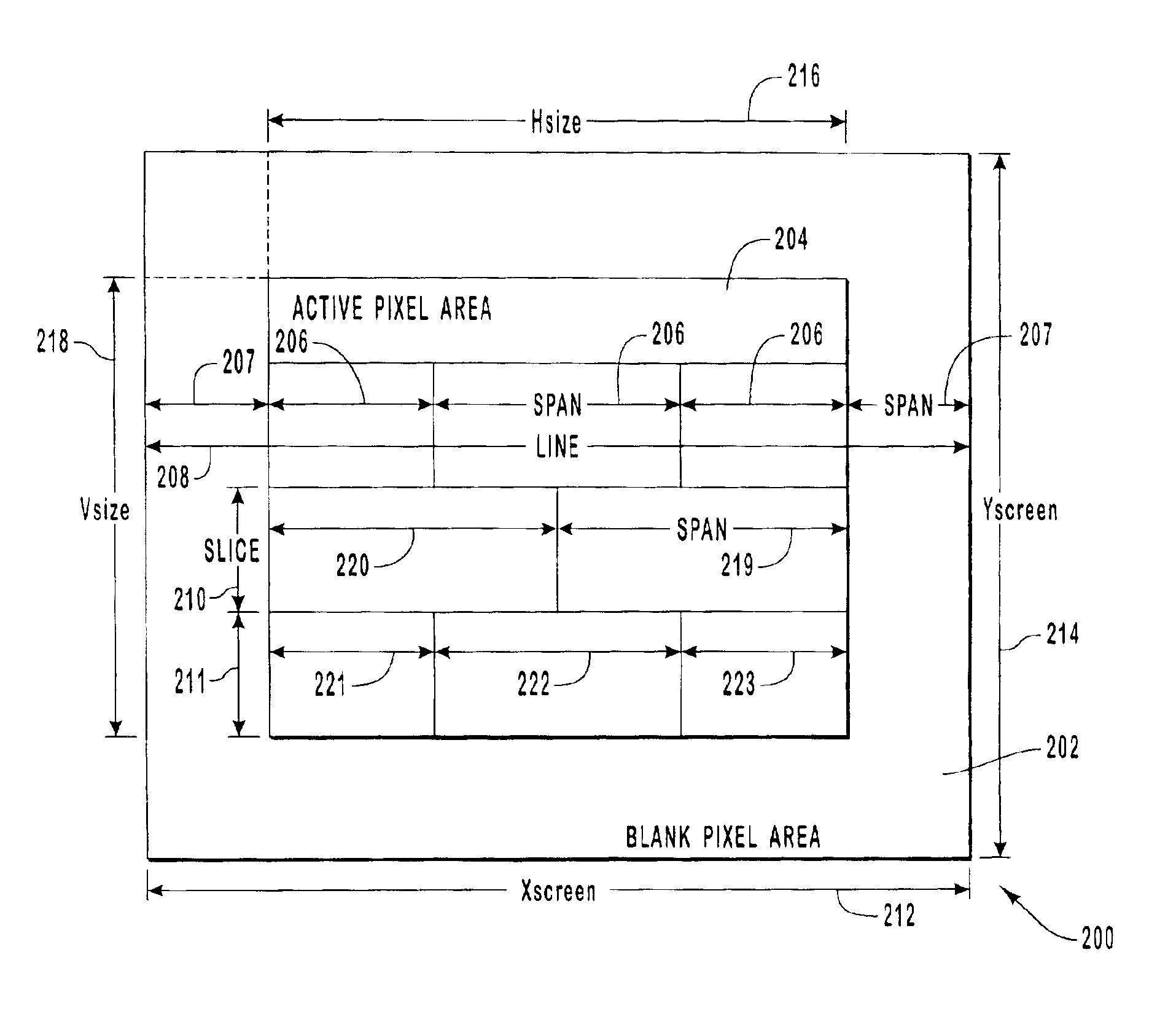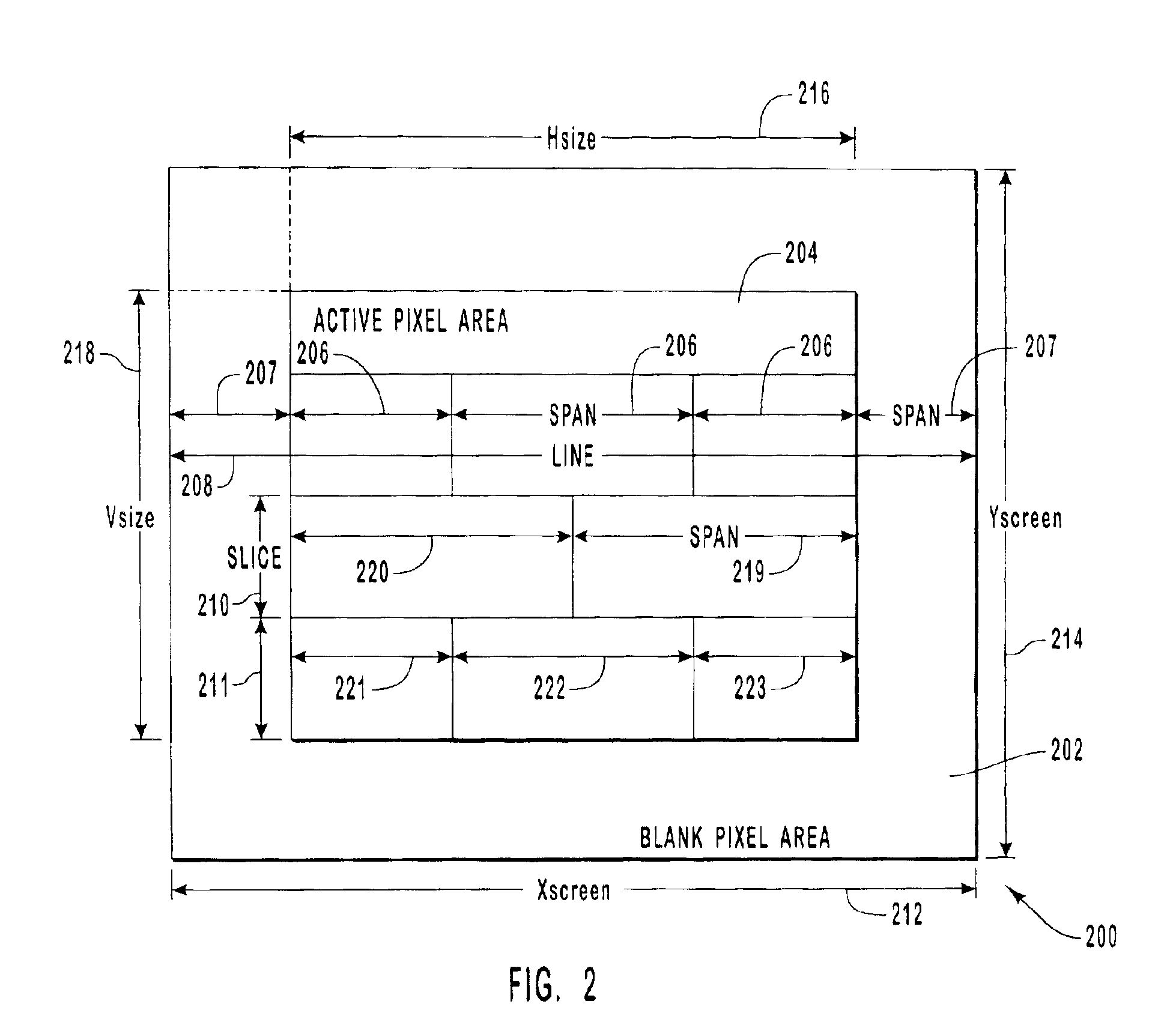Compositing images from multiple sources
a technology of image data and compositing, applied in the field of system and method for compositing images, can solve the problems of image data directly from image data sources saving memory bandwidth and memory footprint, and achieve the effects of effectively minimizing the memory requirements for displaying images, saving memory bandwidth and memory footprint, and significantly reducing or eliminating double buffering requirements
- Summary
- Abstract
- Description
- Claims
- Application Information
AI Technical Summary
Benefits of technology
Problems solved by technology
Method used
Image
Examples
Embodiment Construction
[0027]As used herein, “image” refers to what is shown on a display device and can include both the active pixel areas and the blank pixel areas. An image can be a frame and can include video data, graphic data, Internet data and other types of data that are displayed on a display device. Images are typically displayed one after another on the display device.
[0028]For a given display, there are typically many different windows that are being shown. For example, when a user is viewing Internet data, there may be some synthetically generated windows or borders, three dimensional graphics, a video stream and other data displayed in each image. Each image generated for this type of display is composited by the present invention directly from the data sources. Thus, when a portion of video data is needed, that portion of the video data is simply read from the source and displayed.
[0029]The present invention extends to both methods and systems for compositing an image. The embodiments of t...
PUM
 Login to View More
Login to View More Abstract
Description
Claims
Application Information
 Login to View More
Login to View More - R&D
- Intellectual Property
- Life Sciences
- Materials
- Tech Scout
- Unparalleled Data Quality
- Higher Quality Content
- 60% Fewer Hallucinations
Browse by: Latest US Patents, China's latest patents, Technical Efficacy Thesaurus, Application Domain, Technology Topic, Popular Technical Reports.
© 2025 PatSnap. All rights reserved.Legal|Privacy policy|Modern Slavery Act Transparency Statement|Sitemap|About US| Contact US: help@patsnap.com



